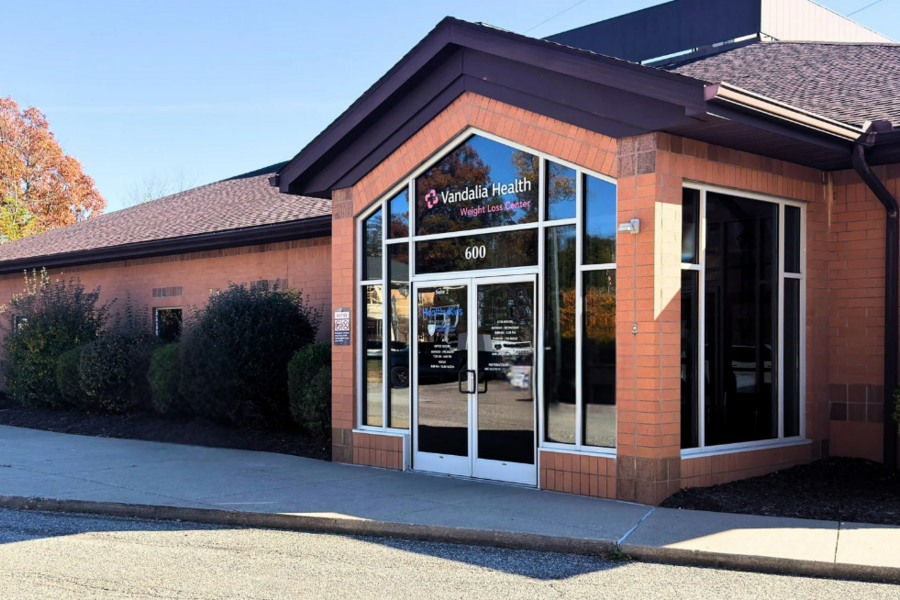Our Approach to Lap Band (Adjustable Gastric Band) Surgery
About Lap Band Surgery
The adjustable gastric band is a silicone-based hollow ring that is placed around the upper part of the stomach. Once in place, the band creates a small pouch in the upper stomach, which can hold only a limited amount of food. The opening between the upper and lower parts of the stomach is adjustable, controlling the flow of food and helping you feel full sooner and for a longer period.
The band can be tightened or loosened using saline through an access port under the skin, allowing your care team to personalize your results over time.
Advantages of Lap Band Surgery
Lap band surgery is primarily a restrictive procedure, meaning it limits the amount of food you can eat without bypassing the intestines. Some key advantages include:
- Performed laparoscopically, using small incisions for shorter recovery, less tissue damage and shorter hospital stays
- Reversible if necessary
- Lower risk of long-term nutritional deficiencies compared to malabsorptive procedures
- Shorter operation time and generally safer than more complex weight-loss surgeries
Disadvantages of Lap Band Surgery
While safer, lap band surgery generally results in less weight loss than malabsorptive procedures like gastric bypass or duodenal switch:
- Average patients lose about 50% of excess body weight in the first year
- Some weight may be regained over 3–5 years
- After 10 years, only about 20% of patients maintain their initial weight loss
- Successful long-term results depend on commitment to lifestyle changes, healthy eating and regular physical activity
- High-calorie soft foods may pass easily through the band, limiting weight-loss results
Risks of Lap Band Surgery
While safer than many other bariatric procedures, the lap band still carries risks:
- Vomiting if too much is eaten or the band passage becomes blocked
- Band slippage or erosion, which may require revision surgery
- Tubing leaks between the band and the access port, potentially requiring repair
- Infection or bleeding (less common)
- Approximately 15–20% of patients may need a second surgery for complications
- Rarely (<1%), complications can be fatal
Am I a Candidate for LAP-Band Surgery?
You may be a candidate if you answer “yes” to the following:
BMI ≥ 40, or BMI ≥ 35 with obesity-related conditions (diabetes, hypertension, sleep apnea, arthritis, high cholesterol)
Age 16–70 (some exceptions)
Understanding and acceptance of surgical risks
Previous failed attempts with diet, behavioral or medical therapy
Realistic weight-loss expectations and motivation for lifestyle changes
Ability to understand the procedure and long-term implications
Commitment to follow post-surgical diet, vitamins, exercise and follow-up
Free of untreated psychiatric illness or substance abuse
Obesity for at least 5 years
If you do not meet all criteria, a medical weight-loss program may be recommended instead.

West Virginia’s Weight Loss Specialists
Our bariatric surgeons are experts in a variety of weight loss surgery techniques.
What to Expect
1. Attend an Educational Seminar
All patients must attend our free, physician-led seminar before scheduling an appointment. This session reviews gastric bypass, sleeve gastrectomy, and adjustable gastric banding and prepares you for next steps.
2. Review Insurance Requirements
Check with your insurance provider to confirm bariatric surgery coverage. Requirements vary by plan.
3. Complete a Supervised Weight-Loss Program (if required)
Many insurers require 3–12 months of supervised weight-loss visits. Documentation typically includes:
Provider signatures and contact information
Weight at each visit
Diet plan details
Lifestyle recommendations
Exercise history
Medications used
Evidence of weight-loss attempts
4. Submit a Letter of Intent
This personal statement explains why you want surgery, your expectations, your understanding of the procedure, and how you plan to maintain lifestyle changes.
5. Complete Consent Forms and Patient Worksheets
These forms allow your care team to coordinate with your insurance and prepare your medical chart.
6. Gather Medical Records
Bring documentation of treatment for obesity-related conditions such as diabetes, hypertension, sleep apnea, asthma, and joint problems.
7. Attend at Least One Support Group Meeting
Talking with previous bariatric patients helps set realistic expectations and builds support.
Medical Consultation
You will meet with a nurse and a physician for a detailed medical history review, medication review, physical examination and a discussion about your surgical options.
Nutrition Evaluation
A registered dietitian will assess your eating habits and help you implement the necessary dietary changes for long-term success.
Psychological Assessment
A licensed psychologist will determine your readiness for surgery and long-term behavior changes.
Preoperative Teaching
About 1–2 weeks before surgery, you will meet with a nurse for a detailed review of what to expect before, during and after surgery.
Preadmission Testing (PAT)
Includes:
Lab tests
EKG
Pregnancy test
Chest X-ray (if needed)
Anesthesia evaluation
You will arrive at the hospital two hours before your scheduled procedure. After surgery, you will recover on the bariatric unit.
Typical hospital stay:
1 night for adjustable gastric banding
2–3 nights for gastric bypass or sleeve gastrectomy
Before discharge, you will learn:
Phase 2 diet
Incision care
Medication instructions
When to follow up
1 Week
Meet with nurse and physician
Remove drain and/or staples
Review Phase 3 diet
1 Month
Meet with dietitian, nurse and exercise physiologist
Start Phase 4 diet
Build personalized exercise plan
3 Months
Nurse visit
Review vitamin and mineral guidelines
6 Months
Full team visit
Lab work ordered
Diet, progress and exercise reviewed
9 Months
Nurse and physician visit
12 Months
Full team evaluation
Annual labs ordered
18 & 24 Months, Then Annually
Review diet, labs, progress and any concerns
Daily Nutrition Needs
Protein:
Men: 110–120 g/day
Women: 80–90 g/day
Fluids:
64 oz/day minimum
Exercise:
3–4 days/week, 30–45 minutes
Daily Vitamins
Men:
Prenatal or multivitamin
Vitamin B12
Iron if anemic
Calcium with vitamin D (1200 mg/day)
Women:
Prenatal vitamin
Vitamin B12
Iron if anemic or menstruating
Calcium with vitamin D (1200 mg/day)
Ongoing Support
Regular follow-up visits and monthly support groups are strongly encouraged. Patients who stay engaged with their care team and support network typically experience the best long-term outcomes.



